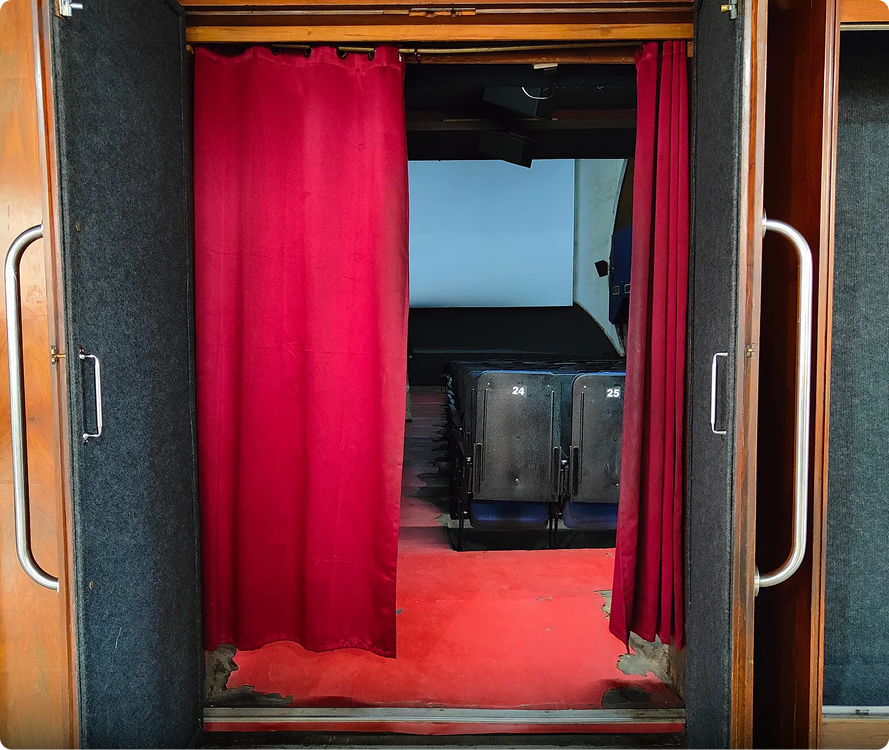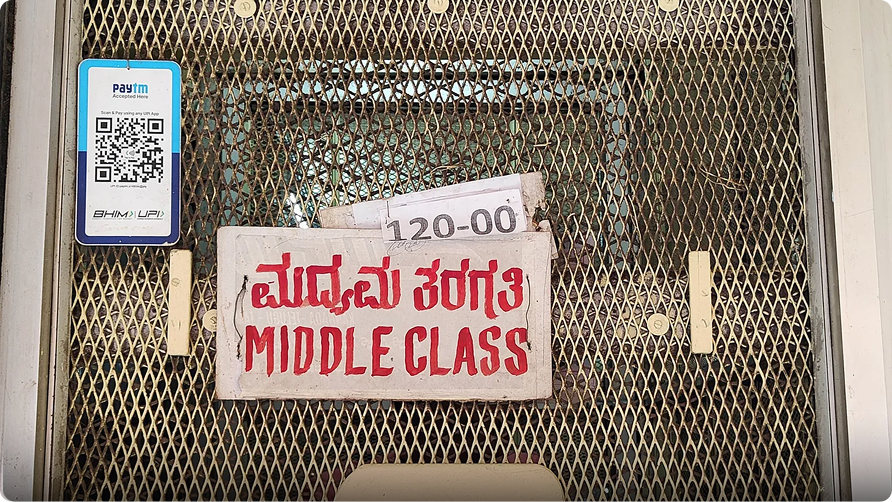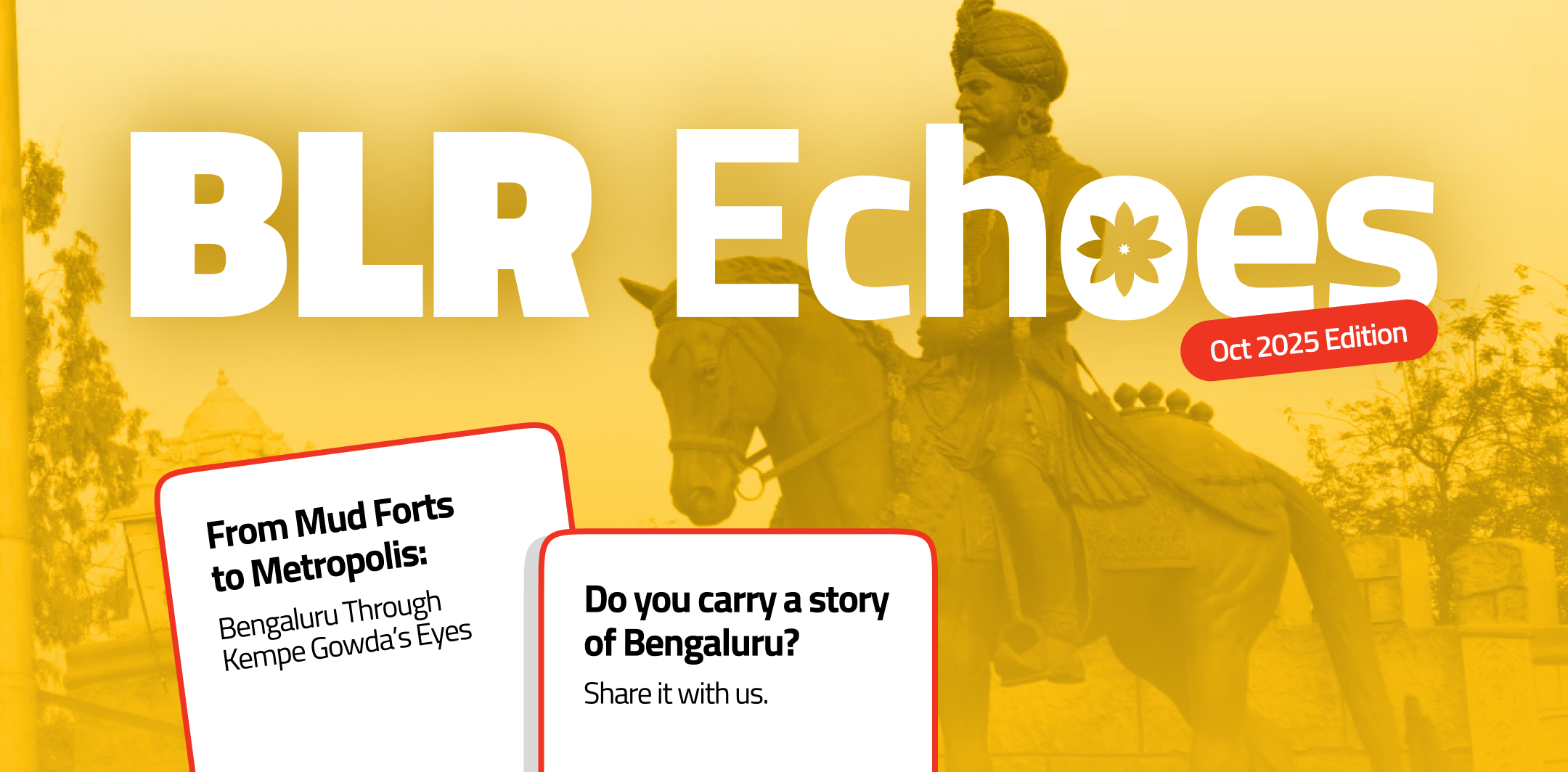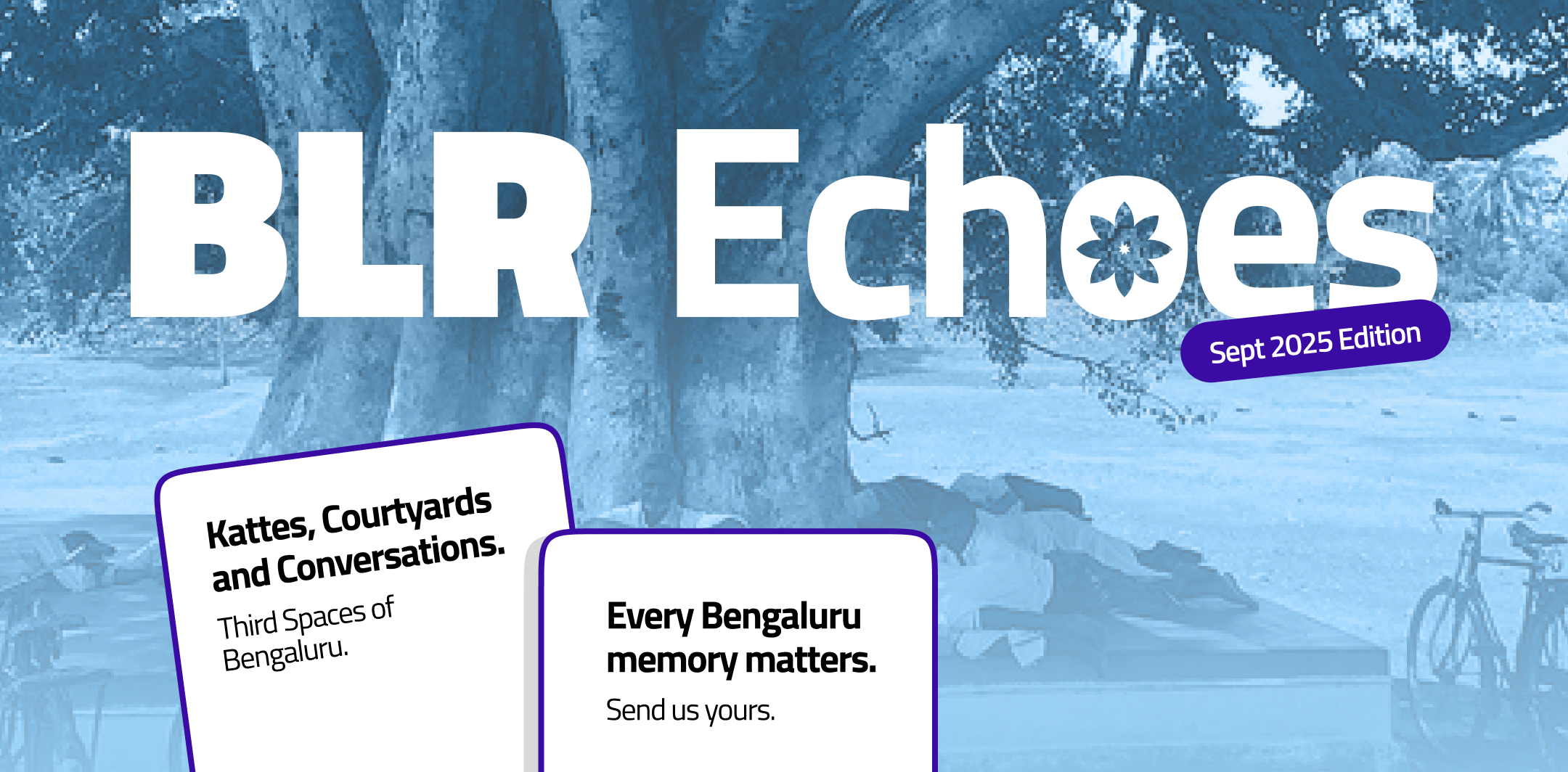
Whistles, Firecrackers, and the Front Row Seats
When you hear the term "Bengaluru culture," what comes to mind? BLR Echoes is our attempt at finding out. Discover it with us, from urban reflections and stories to ideas made within this microcosm we call home. Starting next month, BLR Echoes will evolve to focus more deeply on stories of culture, people, and the city. More on that next month! For updates on our programmes and initiatives, we’re starting a LinkedIn Newsletter. Stay tuned, and don’t forget to follow us on LinkedIn to catch every update.
Subscribe for stories from and for Bengaluru. No spam, we promise!
Whistles, Firecrackers, and the Front Row Seats

Many remember the soft glow of incandescent bulbs casting a hazy warmth over single-screen halls. Overhead, noisy fans whirred, and the wooden or iron seats—luxuries back then—creaked with every shift. Red oxide walls stood witness to films screened without amplifiers, yet filled with the amplified joy of whistles and cheers.
Talkies were magical, as many people recall, but it all started in the early 1900s when travelling tent theatres appeared at city fairs like Karaga, Dussehra, or temple jaatres. Audiences sat on mats and stools, watching silent films projected from benches, with flickering reels casting shadows on makeshift screens.
When India’s first talkie, Alam Ara, premiered in 1931, it revolutionised the way cinema was experienced. Bengaluru quickly embraced the format, with Elgin Theatre in Shivajinagar, which opened in 1914, followed by Plaza Theatre on MG Road in 1930.

The ’70s and ’80s were when the talkie truly became a cultural ritual. Fandom ran feverishly—a Rajkumar or Vishnuvardhan release meant garlands on cutouts, firecrackers at 7 am, and dancing in the aisles before the opening credits. From Sagar Talkies in Gandhinagar to Sampige Theatre in Malleshwaram, every neighbourhood had its cherished screen.
The Gandhi Class—the cheapest ticket, right up front—was a badge of both economic hardship and cinematic devotion. For college kids bunking class, retired uncles killing time, or lovers seeking two hours of anonymity, the talkies were home. Matinee shows became quiet havens for women. And somewhere in the corners, tucked into silence, sat those who didn’t quite belong anywhere—queer couples, interfaith lovers, or introverts. The talkie just let them stay.
There were flamboyant prints with bold illustrations pasted on public walls, flyovers, and bus stops. In the heart of Majestic, Ramachandraiah and his son Raju ran Sri Venkateshwara Litho & Printing Press, handcrafting colourful film posters that once lit up Bengaluru’s walls. These nostalgic prints, rich in colour and local flair, captured the soul of single-screen cinema, now fading into history.

By the 2000s, multiplexes took over—mall-bound, air-conditioned, and polished. One by one, the talkies faded. Lido became a mall, Galaxy became a co-working space, Rex shut after 80 years, and only a few, like Santosh, remain.
But the legacy lingers in old photos and the rowdy charm of front benchers. Talkies once shaped how Bangalore felt about movies: loud, messy, unforgettable.
The Vintage Pulse of Bengaluru
Tucked between tech parks and traffic snarls is a growing subculture that treasures the past, be it the click-clack of a restored typewriter, the hum of a turntable, or Azmath Uncle’s vintage cameras that defy digital speed.
It isn’t just about the tangible—it lives in the intangible too. Cafés with old-world charm, untouched by time, like YDH Canteen in Shantinagar or Koshy’s in Ashok Nagar, carry this spirit forward.
There’s Balaji Antiques, and also the infamous Sunday Market (aka Chor Bazaar), where you can thrift treasures from a bygone era. For many Bengalureans, vintage isn’t about looking back—it’s about slowing down and making space for the tactile, the tangible, and the timeless.
On that note, here’s a sneak peek of our next episode of From Code To Culture with Dr. Ravi Prakash — one of Bengaluru’s most passionate collectors of vintage cars and historic vehicles. We’ll be dropping the full episode on our YouTube channel next week, so stay tuned!
The next edition of BLR Echoes will look different, but as always, we’d love to hear from you. Say hello, share a story, or your reflections on life in Bengaluru.








.png)
